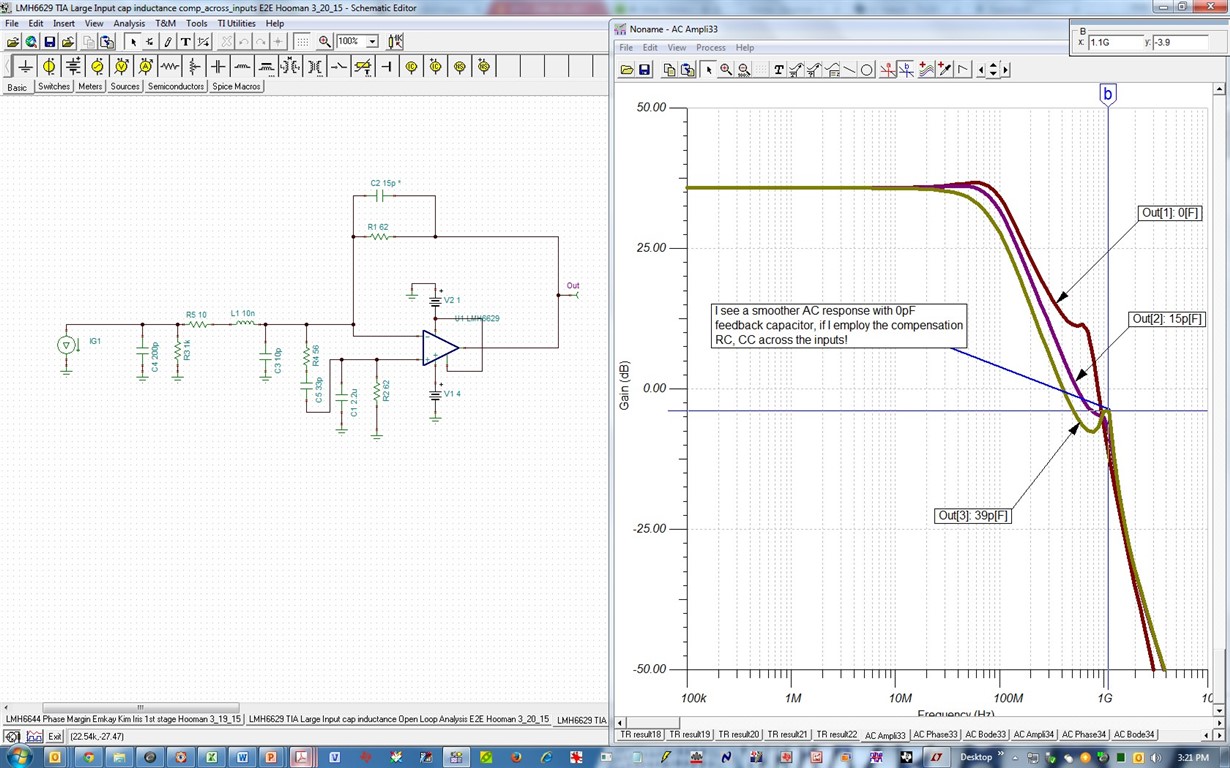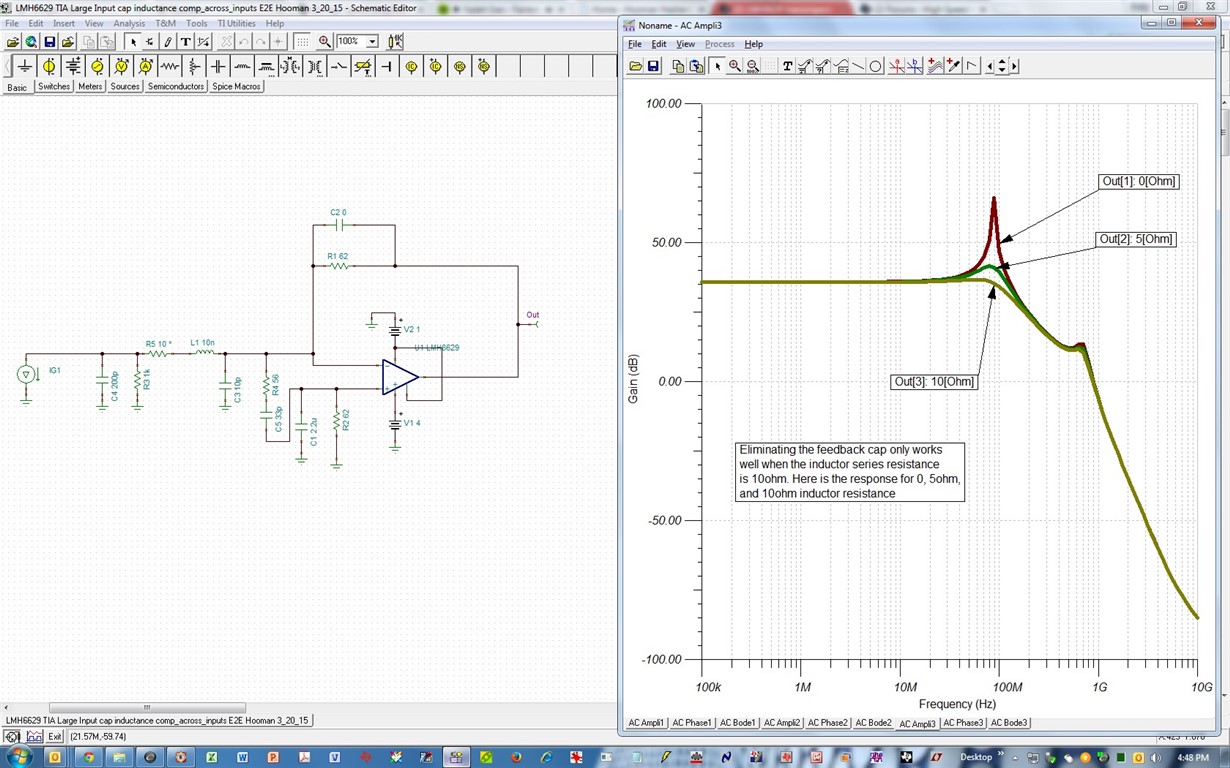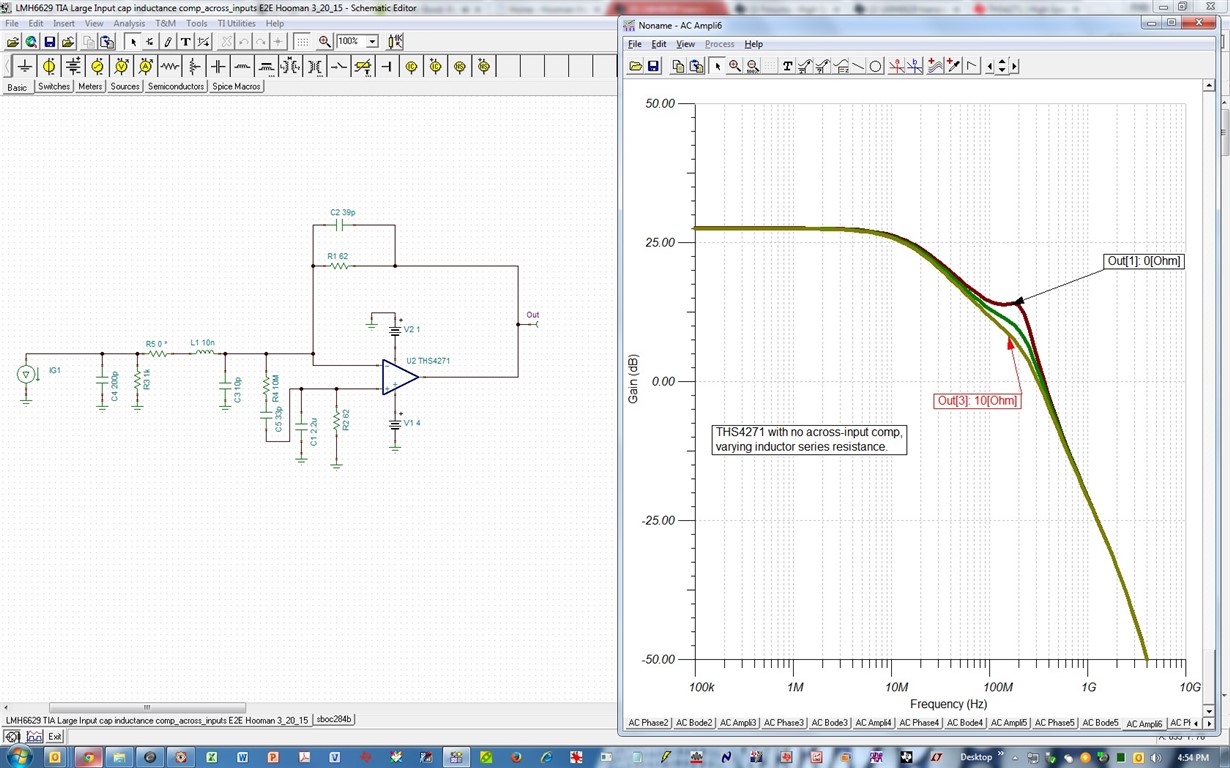Hi,
I'm using the LMH6629 amplifier in the first stage of a transimpedance amplifier connected to an IR detector that has 200 pF of shunt capacitance and 1 kOhm of shunt resistance. I use a rather low 62 Ohm feedback resistor with a 39 pF compensating cap across it. I leave the COMP pin unconnected so that the default compensation is 4V/V stable. I used LTSPICE to check the stability, and it will show oscillation if the inductance of the cable is greater than about 12 nH. This is because the noise gain drops below 4V/V when the noise gain curve intersects with the LMH6629's open loop curve, due to the inductance. I started playing with the compensation cap value in SPICE to see if that helps, but haven't finished with the simulation yet. I have several options I'm exploring but have a couple of questions I'd like to post here:
Question 1 - Is there any problem with using a 62 Ohm feedback resistor?
Question 2 - I use an asymmetric set of supply voltages +4V and -1.2V. Is there any problem with that?
Question 3 - Is there a compensated, similar op-amp in the same WDFN-08 package that has the same pinout as the LMH6629?
Ken






